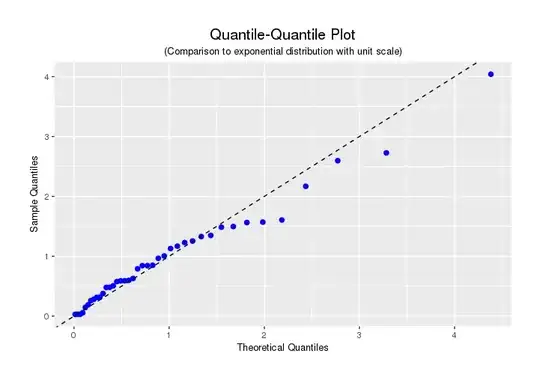I am new to Bayesian analysis and using the following WINBUGS example to understand Bayesian hierarchical modeling:
I have 2 questions:
1) For the fixed effects terms, i.e., the beta0 and beta1 terms, I would like to know why is the values of (0.0, 1.0E-5) is a vague prior, as opposed to (0.0, 10,000) for example.
Does the setting of these vague prior hyperparameters depend on whether or not the covariate data is standardized/normalized (For example, 1.0E-5 is used as the vague prior when the data is normalized between 0~1 and 10,000 would be the vague prior for non-normalized data) ?
2) For the tau.h and tau.c in the model, I am seeing this used a 'fair' prior. What difference/effect would it make if both of these were set to: (0.5,0.0005). I have seen it used here for instance. Should I use the prior with lowest DIC? And is (0.5,0.0005) a 'fair' prior?
any insights are appreciated.
